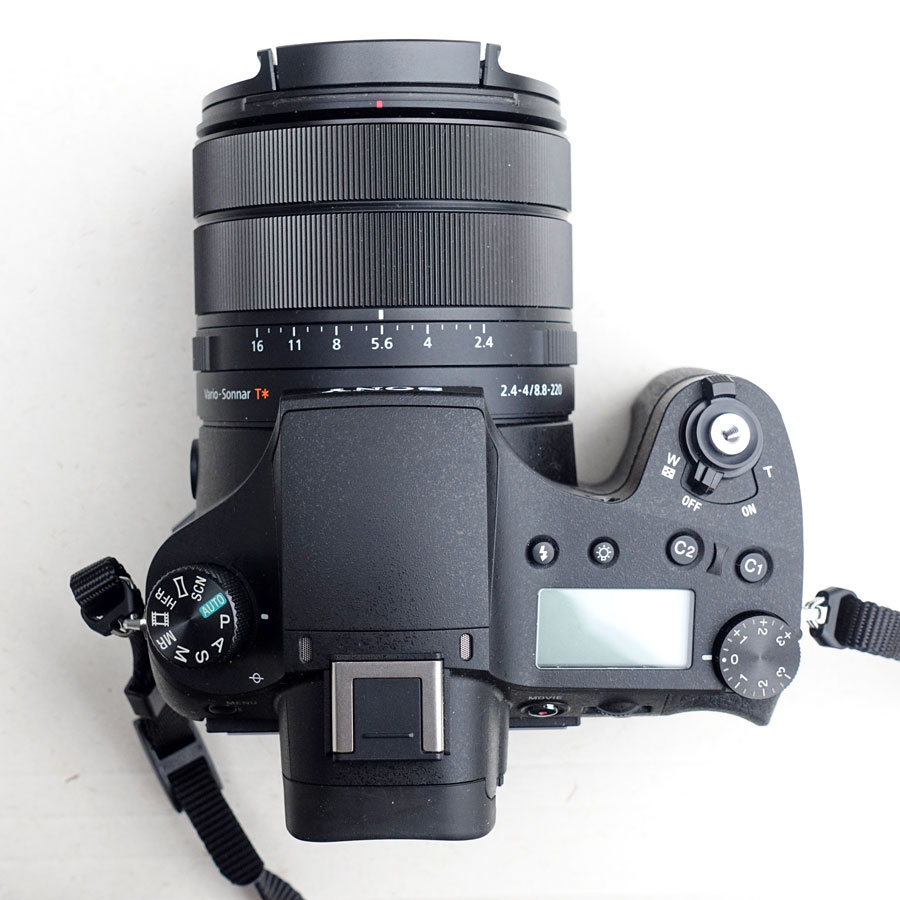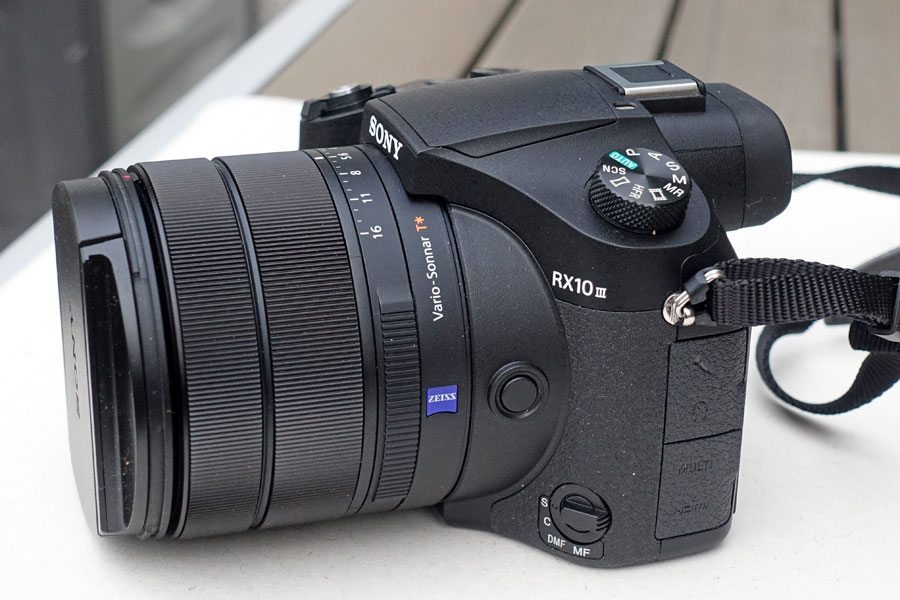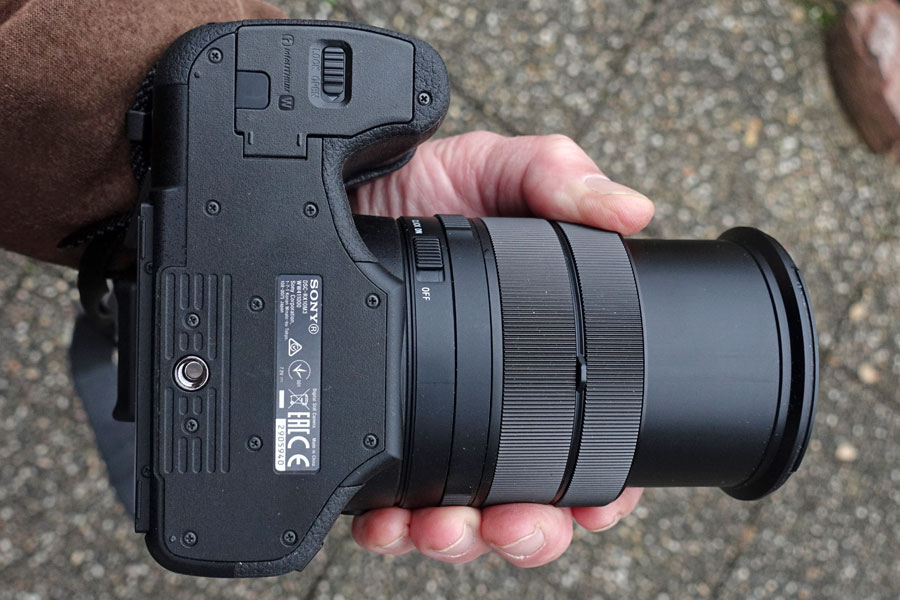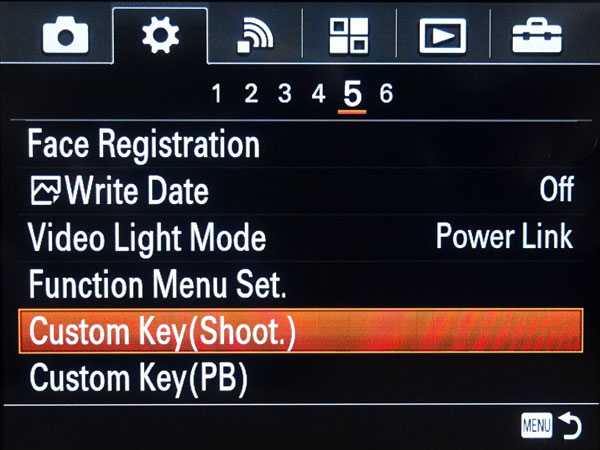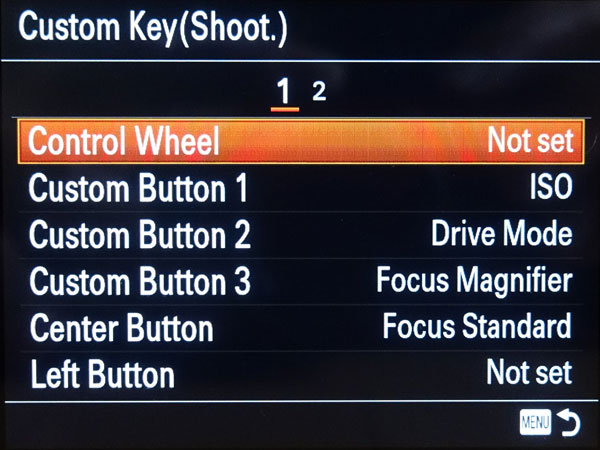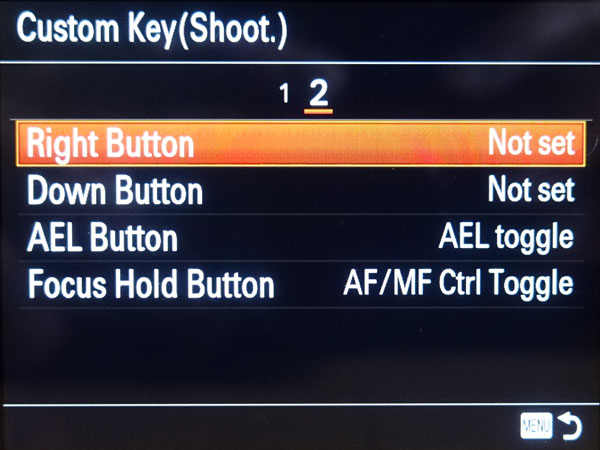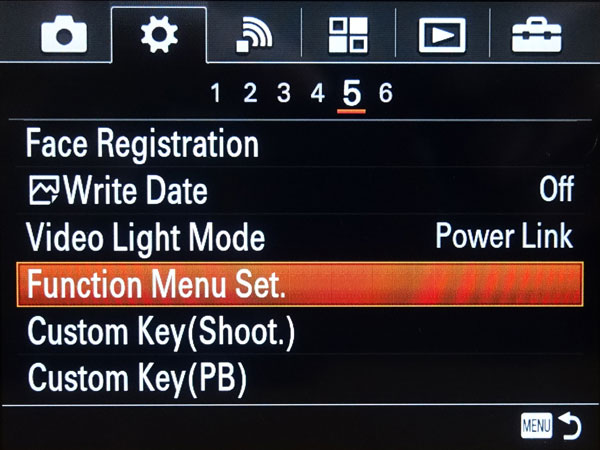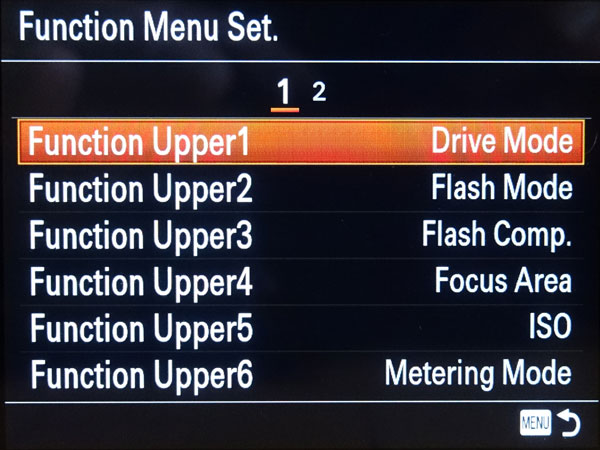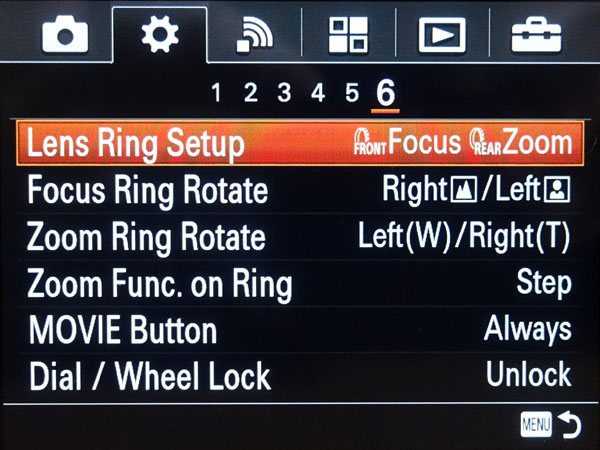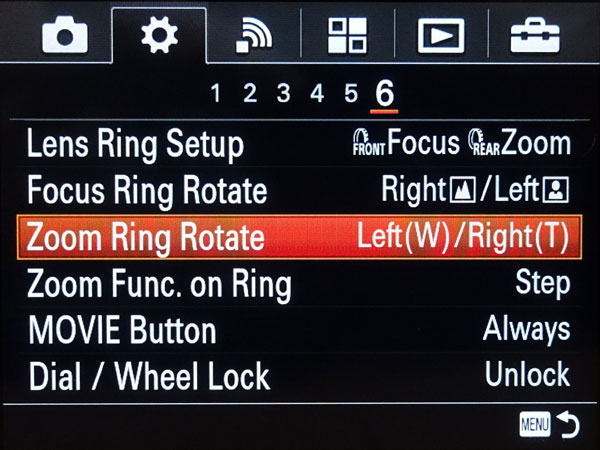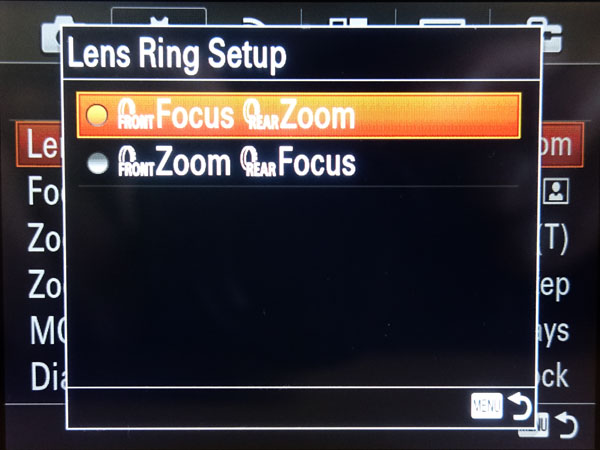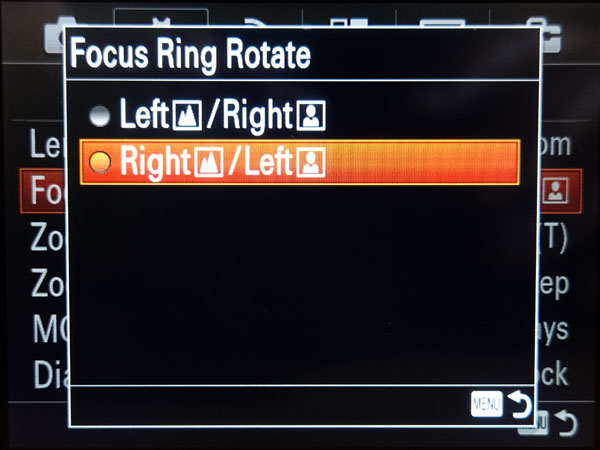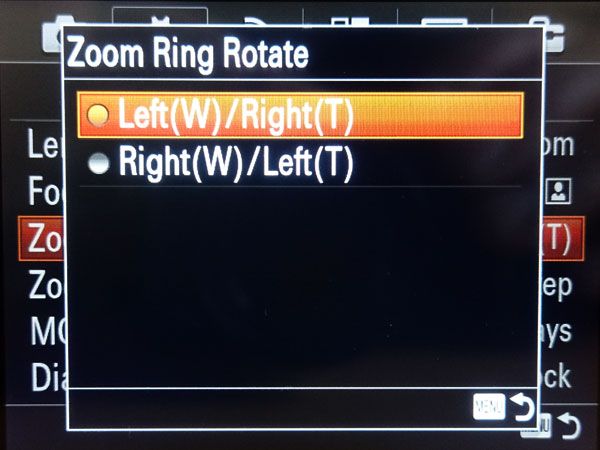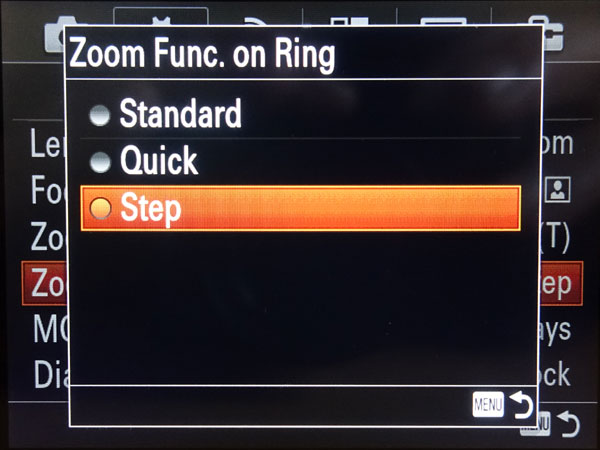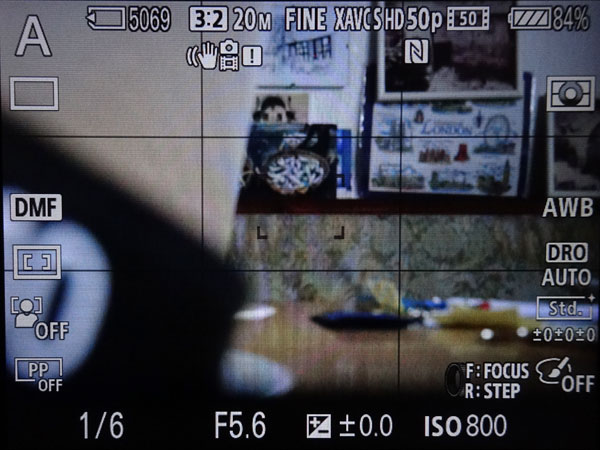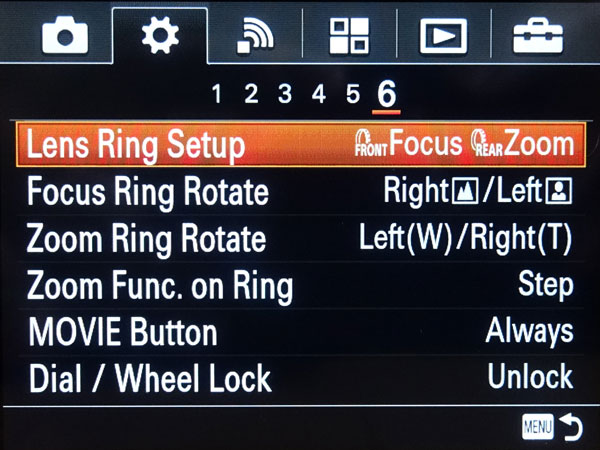Sony RX10 M3: Configuration
Introduction: Overview of What Can Be Configured | The Configuration Options in Detail | How I Use the Configuration Options | Further Useful Settings | Conclusions | Links and Books | Appendix: A Demonstration of the Settings Screens
Archive
On this page, I describe how you can configure the Sony RX10 M3. I demonstrate the basic configuration options for this camera, but I cannot guarantee that my list of configuration options is complete... I also describe my configuration choices.
By the way, the RX10 M3 is very similar to the RX100 M4, because they belong to a similar camera generation. The main differences are given by the fact that the RX10 M3 has by far more buttons and rings for setting the camera, which makes many things a lot easier for me. But as a starting point for this page, the respective page for the RX100 M4 was quite useful.
Also note that there are further settings some of which are only listed and described below; some of them will be described elsewhere (for example, support for manual focusing).
Note: I got somewhat crazy about how to write the Sony terminology. Books and manuals differ in many ways. I will write names (on buttons, in menus, etc.) in upper case and italic (or example: the Focus Tracking function, in short, Focus Tracking) and most other things in lower case (even though Sony writes "Control Ring" - but control wheel...). Please note that I am not a native speaker and that there will be many errors...
Introduction: Overview of What Can Be Configured (or Configures the Camera...)
In the following, I will describe the options that the Sony RX10 M3 offers for configuration. Configuration means in this case that you can configure certain camera controls (dials, levers, buttons) to behave in different ways, for example, to allow you to set different things (for example, to set exposure, focus, or dynamic range).
Buttons that set variants or modes of a certain function will, on the other hand, not be regarded as configurable here (for example, the flash button that cycles through different flash modes). But some entities may be "borderline cases"...
Note that I might also have chosen to simply list all the menus and their options, but then I would have just replicated the camera manual.
Overview of the Sony RX10 M3 Controls
(C) Configurable (more or less...)
The Configuration Options in Detail
| Control | Sub-Control | Text/Symbols | Options | Default | My Settings |
| Lens Rings | Front Lens Ring | Both lens rings can only be assigned to the
functions (manual) Focus and Zoom.
While there is a default assignment (see next column), you can switch the functions between the rings (Custom menu, screen 6, Lens Ring Setup). You can also switch the direction of the movement (Custom menu, screen 6, Focus Ring Rotate and Zoom Ring Rotate):
The Zoom function can be set to Standard (default), Quick, and Step (Custom menu, screen 6, Zoom Func. on Ring). |
(Manual) Focus | (Manual) Focus | |
| Rear Lens Ring | Zoom | Zoom (Step Zoom) | |||
| Fn Button |
|
Fn | Offers twelve slots (in two rows), which can be assigned
in the Custom
menu, screen 5, Function Menu Set. to one of the following functions:
Review: Send to Smartphone |
1: Drive Mode 2: Flash Mode 3: Flash Comp. 4: Focus Area 5: ISO 6: Metering Mode 7: White Balance 8: DRO/Auto HDR 9: Creative Style 10: Picture Effect 11: Picture Profile 12: Shoot Mode |
1: Quality 2: Flash Mode 3: Flash Comp. 4: Metering Mode 5: White Balance 6: Aspect Ratio 7: DRO/Auto HDR 8: Smile/Face Detect. 9: Focus Area 10: Peaking Level 11: Peaking Color 12: Grid Line |
| Control Wheel | Top button | DISP | In the Custom menu, screen 2, DISP Button
you can define, which screen types are shown (in cyclic order). There
are two options, Monitor and Finder:
|
unknown to me | Monitor: Display All Info., No Displ. Info., Histogram, Level,
For Viewfinder Finder: Display All Info., No Displ. Info., Histogram, Level |
| Left button | Can be assigned in the Custom menu, screen
5, Custom Key (Shoot) > Left Button to
one of the following functions:
|
Not set | Drive mode | ||
| Right button | Can be assigned in the Custom menu, screen
5, Custom
Key (Shoot) > Right Button to one
of the following functions:
|
Not set | Focus Area | ||
| Down button | Can be assigned in the Custom menu, screen
5, Custom
Key (Shoot) > Down Button to one of the following functions:
|
Not set | Focus Magnifier | ||
| Center button | SET (no text) | Can be assigned in the Custom menu screen 5, Custom
Key (Shoot) > Center Button to one of the
following functions:
Focus Standard (default assignment): If you press this key when the focus area is set to Flexible Spot or Expand Flexible Spot, you can change the position of the focus area by pressing the direction buttons on the control wheel. Depending on the options selected in Focus Area or Center Lock-on AF, the available functions vary when you press the key. Also used to set (confirm) values/selections. |
Focus Standard | Focus Standard | |
| Control Wheel | Used to select values by turning the control wheel
clockwise or counter-clockwise.
Can also be assigned to the following functions (Custom menu screen 5, Custom Key (Shoot) > Control Wheel): ISO, White Balance, Creative Style, Picture Effect, Not set |
Not set | Not set | ||
| Control Dial | Turning the control dial changes the appropriate setting for each shooting mode (not really used for configuring the camera, but for setting values). | ||||
| Custom Button 1 | C1 | Can be assigned in the Custom menu screen 5, Custom Key (Shoot) > Custom Button 1 to one of the following functions:
|
ISO | ISO | |
| Custom Button 2 | C2 | Can be assigned in the Custom menu, screen 5, Custom
Key (Shoot) > Custom Button 2 to one of the following
functions:
|
Drive Mode | Center Lock-on AF | |
| Custom Button 3/Delete Button | C3/Trash Can | Can be assigned in the Custom menu, screen 5, Custom
Key (Shoot) > Custom Button 3 to one of the following
functions:
|
Not set | Zoom Assist | |
| AEL Button | AEL | Can be assigned in the Custom menu, screen 5, Custom
Key (Shoot) > AEL Button to one of the following functions:
|
AEL Hold | AEL Toggle | |
| Focus Hold Button | Can be assigned in the Custom menu, screen 5, Custom
Key (Shoot) > Focus Hold Button to one of the following
functions:
|
Focus Hold | AF/MF Ctrl Toggle | ||
Not Configurable |
|||||
| Aperture Ring | Allows to select the aperture in A and M mode. The Aperture click switch (at the end of the lens) allows to turn on and off clicks when turning the ring. | ||||
| Focus Mode Dial | S, A, C, DMF, MF | Allows to set the focus mode: S = Single shot AF, A = Automatic AF, C = Continuous AF, DMF = Direct Manual Focus, MF = Manual Focus | |||
| Exposure Compensation Dial | +3, ..., -3 | Allows to compensate exposure in 1/3 EV steps between -3 EV and +3 EV | |||
| Mode Dial | P, A, S, M, ... | Allows to set the camera's basic operation mode | |||
*) No guarantee that this number is correct...
Note that many of the controls perform additional tasks such as moving the AF area, switching between functions, etc. Moreover, half-pressing the shutter button cancels playback and magnifications modes and exits menus and help screens.
In the table above, I also list my current configuration, but do not take that information too seriously. My assignments may change over time and according to my changing needs and habits - and I may forget to update my assignments here...
How I Use the Configuration Options
On this page, I more or less describe the "mechanics" of the configuration options for the Sony RX10 M3. For ways of using them, I would like to point you to some books where this topic is dealt with (see links below).
Since the Sony RX10 M3 offers several "hardware" buttons to which a myriad of functions can be assigned to, it is much more flexible to configure this camera than the RX100 models. I therefore did not use the buttons of the control wheel, which were very important when I configured the RX100 M1 and M4 for my purposes.
Overview of the Configuration
On the RX10 M3, I use the AEL and Focus Hold buttons for realizing the AF and AE lock functions, whereby the AF/MF Control Toggle function "simulates" an AF lock and at the same time also toggles between AF and MF. The center button remains in the Focus Standard setting, which enables focus tracking (AF Area set to Center or Wide) or moving the flexible AF spot (AF Area set to Flexible Spot or Expand Flexible Spot). All this leads to the following assignments:
- C1: ISO
- C2: Center Lock-on AF
- C3: Zoom Assist
- Focus Hold: AF/MF Ctrl Toggle (AF Lock and switching between AF and MF; AF/MF Ctrl Toggle locks the AF, when switching to MF)
- AEL: AEL toggle (AE lock)
- Center: Focus Standard (AF Area = Center or Wide: Focus Tracking; AF Area = [Expand] Flexible Spot: Movable and sizeable AF spot)
- Fn: See below
- Front Lens Ring: (Manual) Focus
- Rear Lens Ring: Zoom (set to Step Zoom)
- Left: Drive Mode
- Right: Focus Area
- Down: Focus Magnifier*
*) Works only if MF is selected (directly or via AF/MF toggle).
Configuration of the Custom Keys
The so-called Custom Keys are: the Control Wheel, Custom Button 1-3, Center Button, Left Button, Right Button, Down Button, AEL Button, and Focus Hold Button. The Custom Key (Shoot.) settings are done in the Custom menu on page 5:
In the following, I describe the settings for most of the custom keys. The control wheel is dealt with further below.
AEL Button: AEL (Automatic Exposure Lock)
Implementing an easy access to AE lock is simple because there are already a dedicated button and a function (in several variants) available. In my case, I assigned the AEL toggle function to the AEL Button. This button is the obvious choice, but you can assign the function or one of its variants to any configurable button.
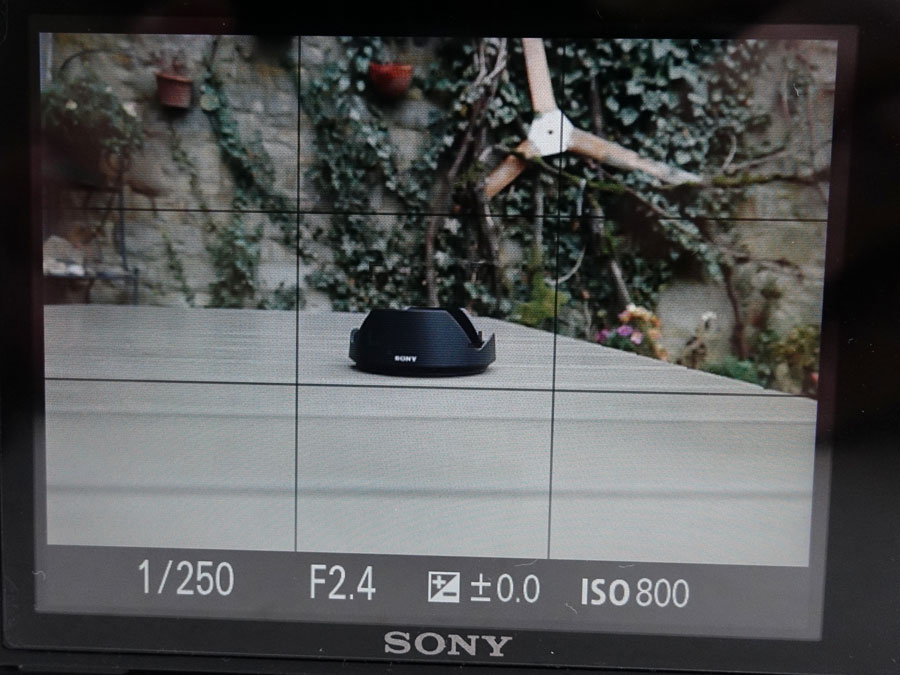 |
 |
Figures: AE lock is indicated at the bottom right of the screen by an asterisk (right); I use it as a toggle function (left: AE lock not activated).
Focus Hold Button: AFL (Autofocus Lock)
By default, AF lock is provided as as "hold" function via the Focus Hold button with the function Focus Hold assigned to it. I, however, prefer to use this functionality as a toggle function so that I need not press the button all the time. As there is no "Focus Hold Toggle" function, I misuse the AF/MF Ctrl Toggle function for this purpose, as I do already on our RX100 cameras. This also allows me to easily switch between AF and MF without having to use the Focus Mode dial, which is more cumbersome.
Control Wheel Buttons (Left, Right, Down Button): Drive Mode, AF Area, and Focus Magnifier
I assigned the Drive Mode function to the Left Button, the AF Area function to the Right Button, and the Focus Magnifier function* to the Down Button. This may change in the course of the time...
*) Works only if MF is selected (directly or via AF/MF Ctrl Toggle).
Center Button: Support for the Flexible Spot or for Focus Tracking
If you set the Center Button to Focus Standard, the behavior of this button can depend on some other camera settings, for example, of the Autofocus Area setting. I found the following two further assignments quite useful:
- Flexible Spot: Set the Autofocus Area to Flexible Spot in order to be able to move the autofocus spot area and use the center button to enter and leave the state, in which you can move the flexible spot.
- Focus Tracking: Set the Autofocus Area to Multi or Center and use the center button to initiate Focus Tracking. As I found out, this can also be useful for close-up shots when you want to use AF and alleviate somewhat the movements of the target or your own movements. See page Close-Ups with Focus Tracking for more information on this topic.
Note: At the moment, I usually use the assignments with Autofocus Area set to Center, so that the center button activates the default function of Focus Tracking. Whenever I want to use the flexible spot, I set the Autofocus Area to Flexible Spot.
Custom Buttons C1-C3
At the moment, I leave the C1 custom button on its default assignment, that is, ISO. I set C2 to Center Lock-on AF and C3 to Zoom Assist. This may change in the course of the time...
Configuration of the Fn Button
The Fn button offers twelve slots (in two rows), each of which can be assigned in the Custom menu, Function Menu Set. to one of 34 functions plus Not set. That is, you can not only assign these functions to the 12 slots, but you can also determine the positions of the functions. This can be handy in case that you often change the same functions (for example, ISO and DRO/HDR). If you place them to nearby slots, changing their attributes is easier as if you place them at opposite ends of the two-row table.
The following screens demonstrate how functions are assigned to the slots of the Fn button menu:
And here is how the Fn button menu looks:
 |
 |
|
Fn button menu, DRO/HDR selected |
The DRO/HDR settings |
Differently from the RX100 M1, the Fn button enters and exits the menu, as with the RX100 M4. The four control wheel buttons move you through the menu table, and the control wheel itself (or the control ring) is used to select options. You can also press the center button to enter a selection screen with its own rules as shown in the right figure above. Sony engineers...
Above, I listed my "personal" assignment of functions to the Fn button menu slots. Here they are again:
- Quality
- Flash Mode
- Flash Comp.
- Metering Mode
- White Balance
- Aspect Ratio
- DRO/Auto HDR
- Smile/Face Detect.
- Focus Area or, because this is redundant, another function...
- Peaking Level
- Peaking Color
- Grid Line
This is the current state of the Fn menu, and it will take some time before I really know, which functions I use often and should therefore be added to the Fn button menu. And the positions are also preliminary.
Configuration of the Lens Rings
The two lens rings can be used for zooming and manual focusing. The camera offers some flexibility in this respect: You can assign the functions to either ring and you can also determine in which direction you want to turn each ring for the respective purpose.
Both lens rings can only be assigned to the functions (manual) Focus and Zoom. While there is a default assignment, you can switch the functions between the rings (Custom menu, screen 6, Lens Ring Setup). You can also switch the direction of the movement (Custom menu, screen 6, Focus Ring Rotate and Zoom Ring Rotate):
- (Manual) Focus (Focus Ring Rotate): From close to infinity turn left to right (default) or right to left
- Zoom (Zoom Ring Rotate): From wide to telephoto turn left to right (default) or right to left
The Zoom function can be set to Standard (default), Quick, and Step (Custom menu, screen 6, Zoom Func. on Ring).
First, you can set the functions for the rings and then rotate directions for the rings (Custom menu, screen 6), at least, if you want to change the default settings (you can see my current assignments):
Secondly, in the Custom menu, page 6, you can enable or disable the Step Zoom feature:
Further Useful Settings
In addition to the settings of the buttons and rings there are some further settings, which determine the behavior of the camera and are quite useful for me. Some of them can be done by assigning a function to a buttons or to the Fn menu, other only by going into the menu system. In the following, I provide a table of those settings that I find important for me; they all reside in the Custom menu (see the screens in the appendix).
| Name | Page | My Setting | Comment |
| MF Assist | 1 | On | Magnifies as soon as you turn the focus ring; I find this helpful most of the time |
| Focus Magnif. Time | 1 | No Limit | Maybe, I will change this again... |
| Initial Focus Mag. | 1 | 5.3 x | I do not find the default 1 x useful |
| Grid Line | 1 | Rule of 3rds Grid | Helps me aligning objects |
| Auto Review | 2 | 2 sec | Maybe, I will extend this time |
| Peaking Level | 2 | Mid | As a start... |
| Peaking Color | 3 | Red | As a start... |
| Live View Display | 3 | Setting Effect On | Shows the correct exposure immediately |
| Pre AF | 3 | On | I set this to "On" for all of our cameras |
| Zoom Setting | 3 | Optical Zoom Only | I may change this for bugs and particulary butterflies... |
| Reset EV Comp | 4 | Reset | Avoids mistakes... |
Conclusions
The Sony RX10 M3 looks much more than its RX100 brethren like a highly customizable camera, where most of the "for me important" functions can be assigned to hardware controls (hardware buttons or rings) or the Fn menu, that is, a kind of "quick menu" (although the options seem somewhat limited to me...) so that delving into the menus is not necessary in most cases.
Links and Books
- Alexander S. White (2016). Photographer’s Guide to the Sony DSC-RX10 III. White Knight Press, Henrico, Virginia (ISBN: 978-1-937986-54-4 (paperback), 978-1-937986-55-1 (ebook))
- Henning Fuchs (2016). Sony RX10 III - Die fehlende Anleitung. Amazon CreateSpace Independent Publishing (ISBN: 978-1537703459 (paperback)).
Appendix: A Demonstration of the Settings Screens
In the following, I show the settings screens that you will find in the camera's Custom menu:
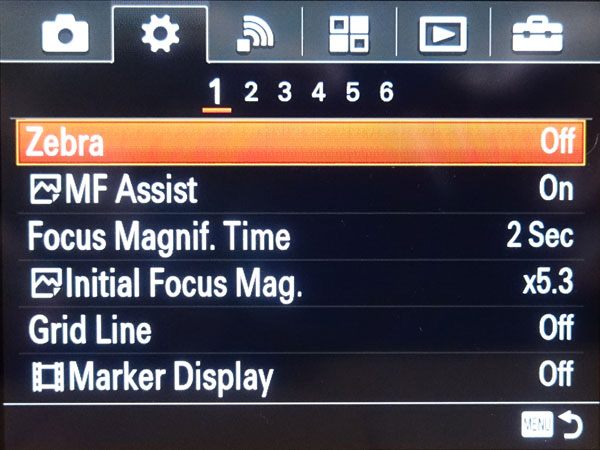 |
 |
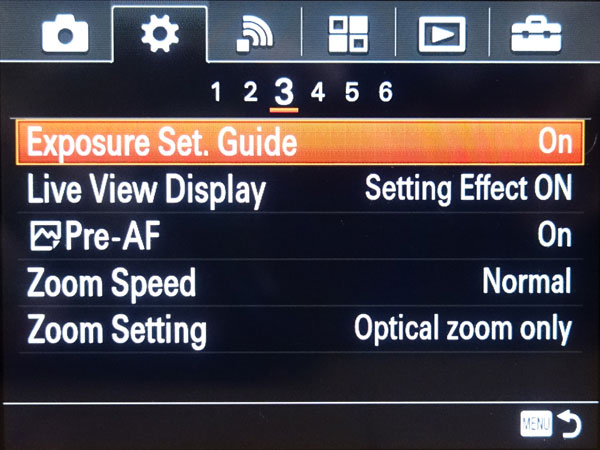 |
||
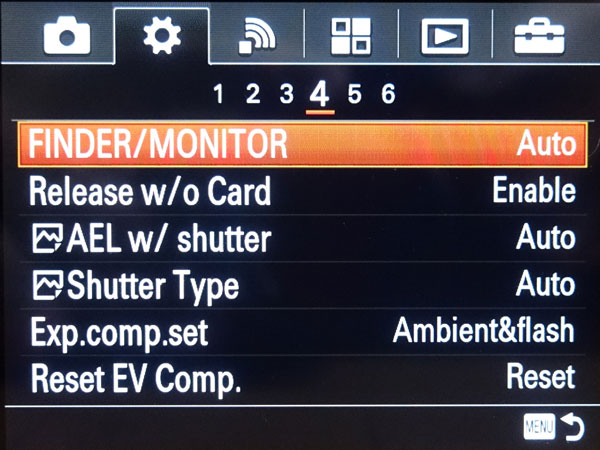 |
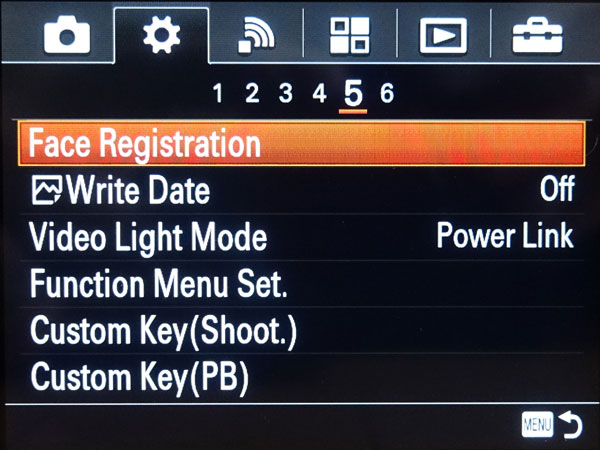 |
Note that the settings shown may or may not correspond to my own choices (most of them do, but currently I use a 3 x 3 grid)...
| 03.05.2020 |
